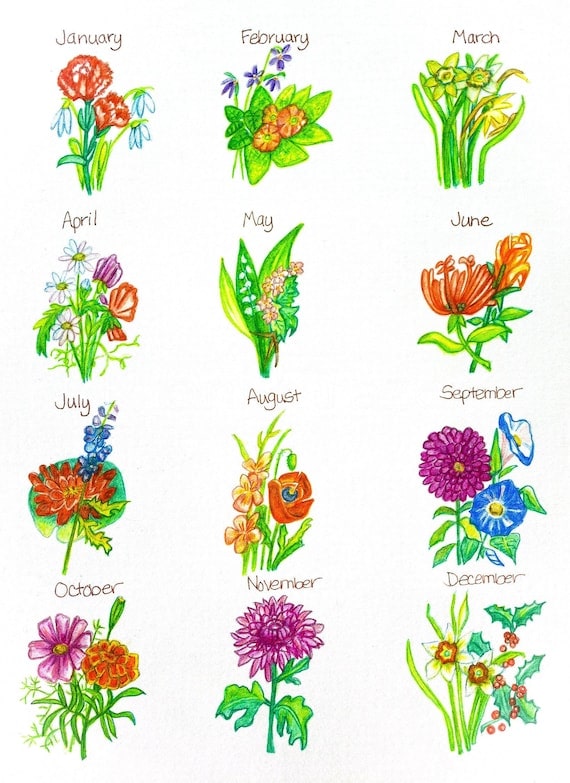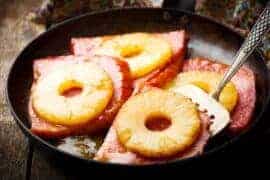Discover the Magic of Birth Flowers: A Complete Parent’s Guide to Birth Flowers Chart
Welcome to our garden of knowledge, where every petal and leaf tells a wonderful story of life and nurture – much like parenting itself! If you’re a parent looking to add a sprinkle of floral charm to your little one’s life, or simply seeking a unique way to celebrate their milestones, you’ve come to the right place. Our comprehensive guide to birth flowers is sure to brighten up your world and offer you an enchanting glimpse into the tradition’s roots that weave through time.
Understanding the Significance of Birth Flowers
Just as we cherish birthstones for their beauty and symbolism, birth flowers carry their own special meanings and historical significance. Each month is represented by one or more flowers, each with unique stories and symbolism that can resonate with your child’s birth month or serve as a thoughtful gift idea for new parents. We’re here to walk you through each month, its corresponding flowers, and the deeper meanings behind them, creating a beautiful tapestry that celebrates the individuality of each birth and blooms with purpose.
The Birth Flowers Chart: A Blossoming Tradition
Before we dive into the very petals of this tradition, let’s unfurl the mystery of how birth flowers came into being. The idea of assigning a special flower to each month dates back to ancient civilizations, where flowers were believed to hold divine significance. Over time, these floral assignments have been embraced around the world, with various cultures adding their unique touch to the tradition. As a result, we now have a rich palette of blooms to draw from, each with its own legacy to share.
January’s Joyful Beginnings: Snowdrops & Carnations
Let’s start our flowery journey with the first blooms of the year. January, often known for its cold and crisp weather, boasts the resilient snowdrop and the vivacious carnation. These flowers represent the themes of love, hope, and admiration – perfect sentiments for a child born in the heart of winter or for a family celebrating new beginnings.
- Snowdrops: Symbolizing hope and rebirth, these little white beauties often emerge even through the snow, reminding us of the perseverance and purity of new life.
- Carnations: Available in a myriad of colors, each shade of the carnation carries a unique meaning from deep love (red) to pure innocence (white). They are a wonderful way to express a palette of emotions and well wishes.
As you embed these floral symbols into your family traditions, you can create personalized gifts, plan themed birthday parties, or even plant the corresponding flower to watch it grow alongside your child.
February’s Flora: Violets & Primroses
The month of love is not just about the iconic roses. February also celebrates violets and primroses, which carry their own distinct messages of faithfulness, humility, and young love.
- Violets: These delicate purple blooms are steeped in symbolism, representing loyalty and faithfulness—a beautiful message to share with a child born in February.
- Primroses: Often signaling the onset of spring, primroses embody the essence of young love and everlasting affection, a sweet nod to the unbreakable bond between parent and child.
Unfolding the symbolic language of flowers opens up a world of creative ways to integrate these special symbols into your child’s life. From nursery decorations to bespoke jewelry, the options are as limitless as your imagination!
March’s Miracles: Daffodils & Jonquils
March ushers in the freshness of spring, and with it, the bright and cheerful daffodil. These golden trumpets are synonymous with rebirth and new beginnings, reflecting the blissful innocence and optimism of a child born this month.
- Daffodils: With their sunny disposition, daffodils mirror the joy and unconditional love that a little one brings into the world. Associated with chivalry and respect, they also signify the high regard that surrounds a new life.
- Jonquils: A close relative to the daffodil, jonquils also represent desire for affection returned and are perfect for conveying your heartfelt desire for your child’s happiness and well-being.
Whether you’re designing birthday invitations or looking for a heartfelt symbol to include in family traditions, the daffodil’s bright presence can be a constant reminder of the joy and renewal that your March-born child embodies.
There’s an entire year of birth flowers waiting to be explored, so let’s continue our journey together! As parents, choosing how to weave these meaningful blossoms into the fabric of family memorabilia or celebrations can be a delightful experience. Each flower holds the potential to bind family memories and create legacies around the unique attributes that make your little one special. Step by step, we’ll guide you through this garden of birth flower meanings, making sure you have all the information you need to nurture these traditions as lovingly as you do your children. Get ready to blossom into a world of floral fascination!

Five Things Parents Should Know When Preparing for a Birth Flowers Chart
1. Learn the Language of Flowers
Each flower speaks a silent language, conveying messages through its color, form, and essence. Before selecting birth flowers for your child, take the time to understand the meanings behind them. This knowledge will not only help you choose a flower that aligns with the traits you wish to celebrate in your child but will also allow you to pass on these stories as they grow.
2. Consider Cultural Variations
Recognize that the symbolism of flowers can vary across different cultures. A flower that may represent joy and celebration in one culture could hold a different meaning in another. This awareness ensures that you honor your own cultural heritage or adopt meanings that resonate with your family’s values and beliefs.
3. Tailor to Personalities and Preferences
While there are traditional flowers assigned to each month, feel free to add a personal touch by including flowers that match your child’s emerging personality or your own preferences. Perhaps there’s a flower that has a special significance in your family history or one that simply feels right. This personalization can make the birth flower concept even more special and unique.
4. Plan for Flower-Related Activities and Gifts
Having a birth flowers chart can inspire a multitude of creative activities and gifts. Cultivate a family garden with your child’s birth flower, craft homemade floral decorations for their room, or celebrate their birthdays with themed parties. Additionally, birth flowers can be incorporated into keepsakes like pressed-flower frames, birth flower illustrations, and jewelry.
5. Keep Seasonal Availability in Mind
When you’re planning events or looking to use fresh flowers, consider the seasonal availability of your child’s birth flower. While some flowers can be sourced year-round, others may be more elusive. Alternate options include silk flowers, which can wonderfully mimic the genuine article, or choosing a secondary birth flower that may be more readily available.
Armed with this knowledge, creating a birth flower chart for your child can become a beautiful ritual that adds depth to birthday celebrations and creates lasting memories. It is a testament to the unique beauty and individuality of your child, reflected through the tender symbolism of nature’s blooms.
As you continue to foster a passion for these botanical beauties, remember that they are more than just a delightful visual treat—they’re historical messengers waiting to be woven into the narrative of your little one’s growing years. Whether you’re buying floral print clothing that corresponds to their birth flower or pointing out their special bloom on a walk through the park, these flowers can serve as constant reminders of love, growth, and personal meaning.
Remember, every time you include birth flowers in your family’s traditions or celebrations, you’re planting seeds of heritage—blooms that will tell their own tales and deeply root your child’s connection to their birth month. So, go ahead and enrich your parenting journey with the blooming gift of birth flowers, and watch as each unfolds like the chapters of your very own family story.
See more great Things to Do with Kids in New Zealand here. For more information see here
Disclaimer
The articles available via our website provide general information only and we strongly urge readers to exercise caution and conduct their own thorough research and fact-checking. The information presented should not be taken as absolute truth, and, to the maximum extent permitted by law, we will not be held liable for any inaccuracies or errors in the content. It is essential for individuals to independently verify and validate the information before making any decisions or taking any actions based on the articles.




